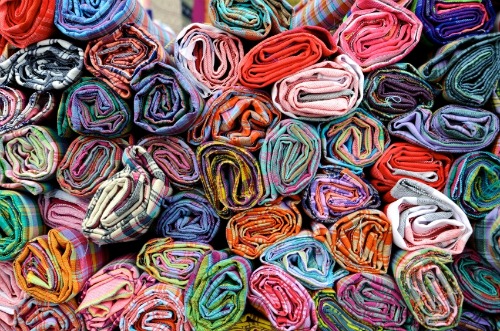Send your question to Umbra!
Q. Dear Umbra,
Does polyester ever break down into molecules that return to the natural state? Does dyed wool compost?
Evelyn P.
Powell River, B.C.
 A. Dearest Evelyn,
A. Dearest Evelyn,
You pose two good questions, though the more I peer into the murky world of textile production and disposal, the more I want to simply curl up in an organic B’leeve (my soon-to-be-trademarked version of the Slanket) for the rest of my time on earth.
It seems you want to find creative ends for some clothing, and I applaud you. I would also like to remind all my dearest readers that nearly 99 percent of textiles are recyclable. Each year, Americans throw out astonishing amounts of clothing and other fabrics — 10.8 million tons in 2009, about 70 pounds per person — adding mightily to our solid-waste crisis. For better dud-disposal options, see my previous columns on garment recycling.
If you choose the composting route, natural-fiber fabrics such as wool, cotton, bamboo, and hemp can indeed go in the pile. For the official words of wisdom on wool, I contacted agricultural extension offices in Washington state and in Texas; the latter, as it happens, boasts the highest number of sheep in the U.S. These experts recommend shredding or cutting wool into small pieces to compost it, and say the dye should not be an issue. (Along the way, I also learned that some people use their compost pile to dye fabric. Now that’s crafty.)
On the topic of polyester, Evelyn, I believe you have made history: Your letter may be the first time “polyester” and “natural state” have been used in the same sentence. The fabric we know as polyester is in fact derived from petroleum, and there ain’t much natural about it. Some enterprising researchers [PDFs] have experimented with composting polyester clothing, and have found that, like bad fashion, it simply will not go away. Casual composters report that a year after adding a cotton-poly T-shirt to a pile, the cotton is gone and all that remains is a spooky polyester skeleton. Estimates for a more complete breakdown of polyester seem to range from 20 to 200 years, given various conditions.
While we are speaking of polyester: Reader Joel S. from Seattle wrote to point out a new study that found washing synthetic fabrics creates teeny plastic fibers that get swept out to sea, can invade the cells of mussels and other creatures, and generally wreak havoc. This is another reason to reduce the plastic in our lives, though I must note that every fabric has its drawbacks (this side-by-side comparision of cotton and polyester is a good illustration). Which makes it extra important that we recycle our clothes, and of course buy less to begin with.
Joel, however, has a burning question: What’s an outdoorsperson to wear, if not synthetics? Oh-so-absorbent cotton is off the table, and he worries that wool is too heavy. But I say take a closer look at wool, especially at the newer lightweight products. Silk is also an option favored by some, and bamboo is entering this arena as well.
Of course, you could always give up your outdoorsy ways and join my B’leeve brigade.
Portmanteauly,
Umbra



